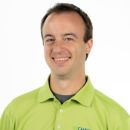Spot-on, standard-free AAV titer and characterization with Stunner

Live30 webinars are thirty-minute presentations designed to update you on the latest innovations, applications, and data in a fast yet interactive format.
Problem
Adding up AAV capsid titers has to start somewhere – and leaning on standards isn’t always an option. Differences in aggregation or serotype between off-the-shelf capsid standards and the AAV you’re testing could throw off standards curves used in classic quantitative ELISAs.
Solution
Getting to answers from another direction with light scattering makes for a standard-free, unbiased way to check out everything is titering at the right level. From 2 microliters of sample and in 2 minutes, Stunner reads titer from first principles light scattering without any sample processing, reagents, or standards – and helps you keep an eye on aggregation and the total amount of DNA and protein present.
Proof
In this webinar, we’ll check out the secrets behind how Stunner delivers titer values without any help from standard curves. We’ll also show how Stunner fits into your downstream AAV characterization or sample QC to spot when samples have gone sour with aggregation and stop unfit samples from eating up resource-intensive troubleshooting.
- Understand how light scattering can connect to AAV titer
- See how the strengths of a biophysical method can complement sequence-specific PCR or ELISA methods
- Understand the risk aggregation poses and where it may strike
You might also like

Pinpoint AAV titer and aggregation with Stunner

Sharpen up your RNA and LNP quant with Stunner

Considerations in leveraging the Universal AAV Standard for dPCR to assess AAV genomes quantity and quality


